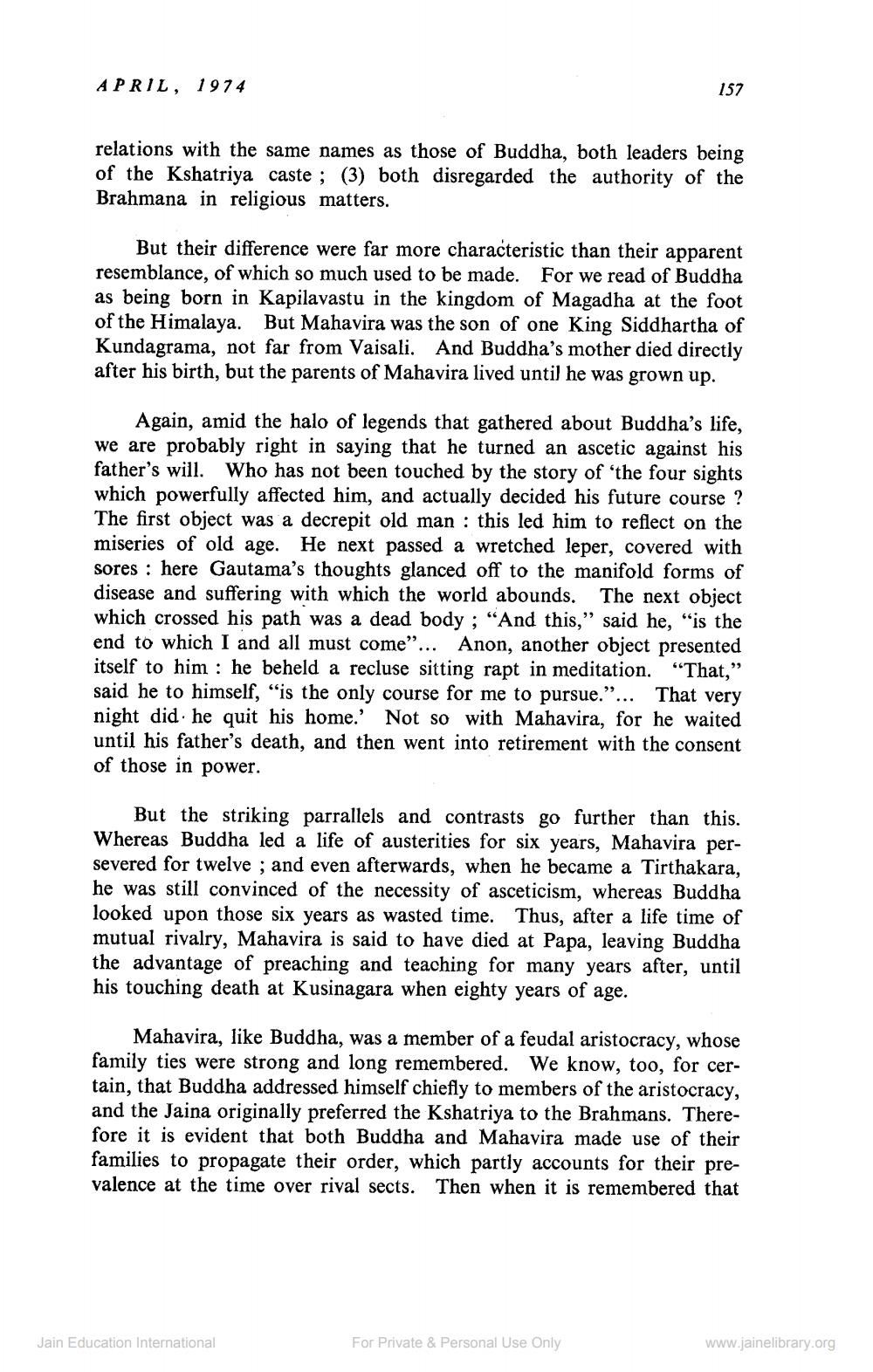________________
APRIL, 1974
157
relations with the same names as those of Buddha, both leaders being of the Kshatriya caste; (3) both disregarded the authority of the Brahmana in religious matters.
But their difference were far more characteristic than their apparent resemblance, of which so much used to be made. For we read of Buddha as being born in Kapilavastu in the kingdom of Magadha at the foot of the Himalaya. But Mahavira was the son of one King Siddhartha of Kundagrama, not far from Vaisali. And Buddha's mother died directly after his birth, but the parents of Mahavira lived until he was grown up.
Again, amid the halo of legends that gathered about Buddha's life, we are probably right in saying that he turned an ascetic against his father's will. Who has not been touched by the story of the four sights which powerfully affected him, and actually decided his future course ? The first object was a decrepit old man : this led him to reflect on the miseries of old age. He next passed a wretched leper, covered with sores : here Gautama's thoughts glanced off to the manifold forms of disease and suffering with which the world abounds. The next object which crossed his path was a dead body; "And this,” said he, “is the end to which I and all must come"... Anon, another object presented itself to him : he beheld a recluse sitting rapt in meditation. “That," said he to himself, “is the only course for me to pursue."... That very night did he quit his home. Not so with Mahavira, for he waited until his father's death, and then went into retirement with the consent of those in power.
But the striking parrallels and contrasts go further than this. Whereas Buddha led a life of austerities for six years, Mahavira persevered for twelve ; and even afterwards, when he became a Tirthakara, he was still convinced of the necessity of asceticism, whereas Buddha looked upon those six years as wasted time. Thus, after a life time of mutual rivalry, Mahavira is said to have died at Papa, leaving Buddha the advantage of preaching and teaching for many years after, until his touching death at Kusinagara when eighty years of age.
Mahavira, like Buddha, was a member of a feudal aristocracy, whose family ties were strong and long remembered. We know, too, for certain, that Buddha addressed himself chiefly to members of the aristocracy, and the Jaina originally preferred the Kshatriya to the Brahmans. Therefore it is evident that both Buddha and Mahavira made use of their families to propagate their order, which partly accounts for their prevalence at the time over rival sects. Then when it is remembered that
Jain Education International
For Private & Personal Use Only
www.jainelibrary.org




